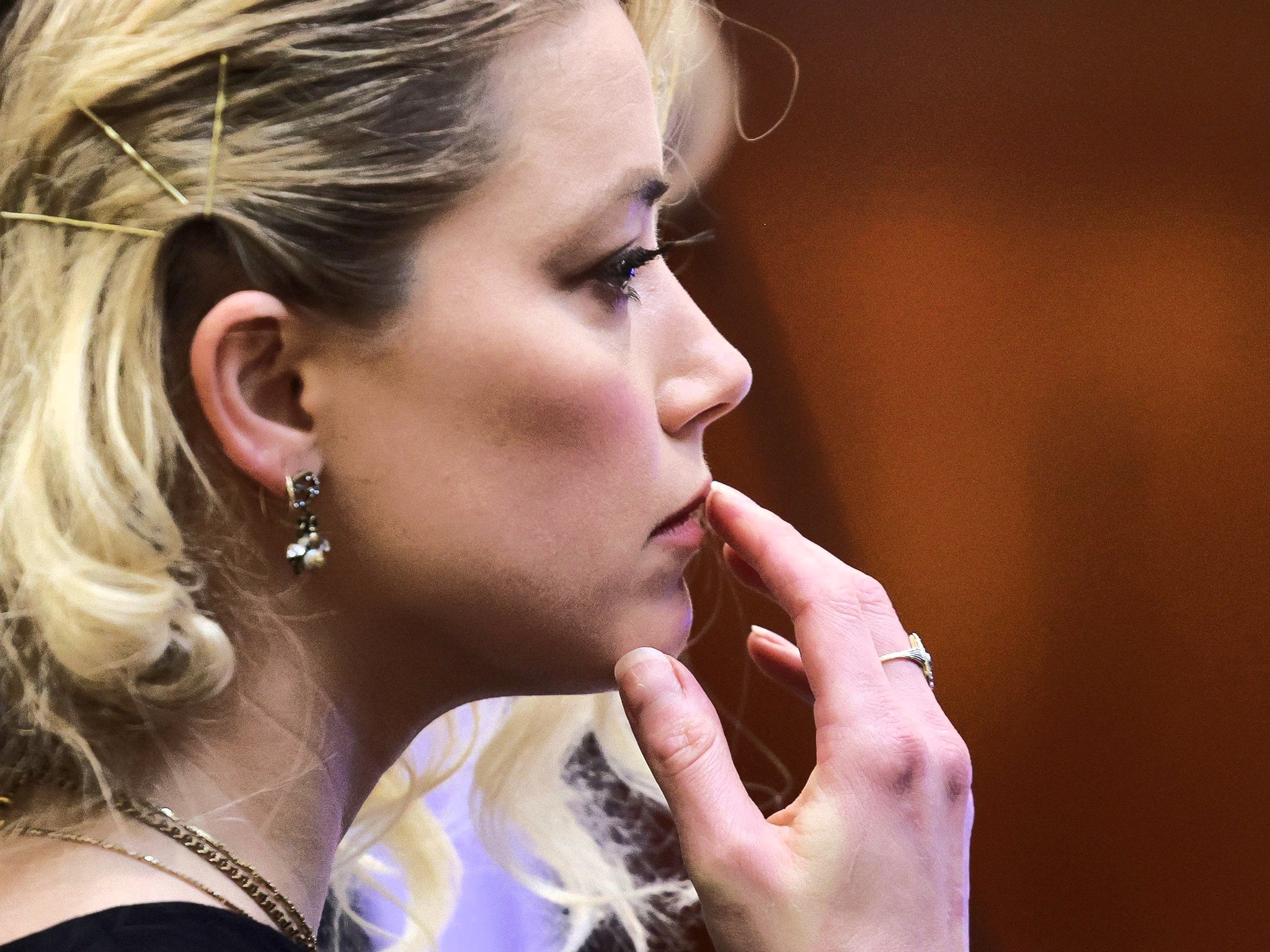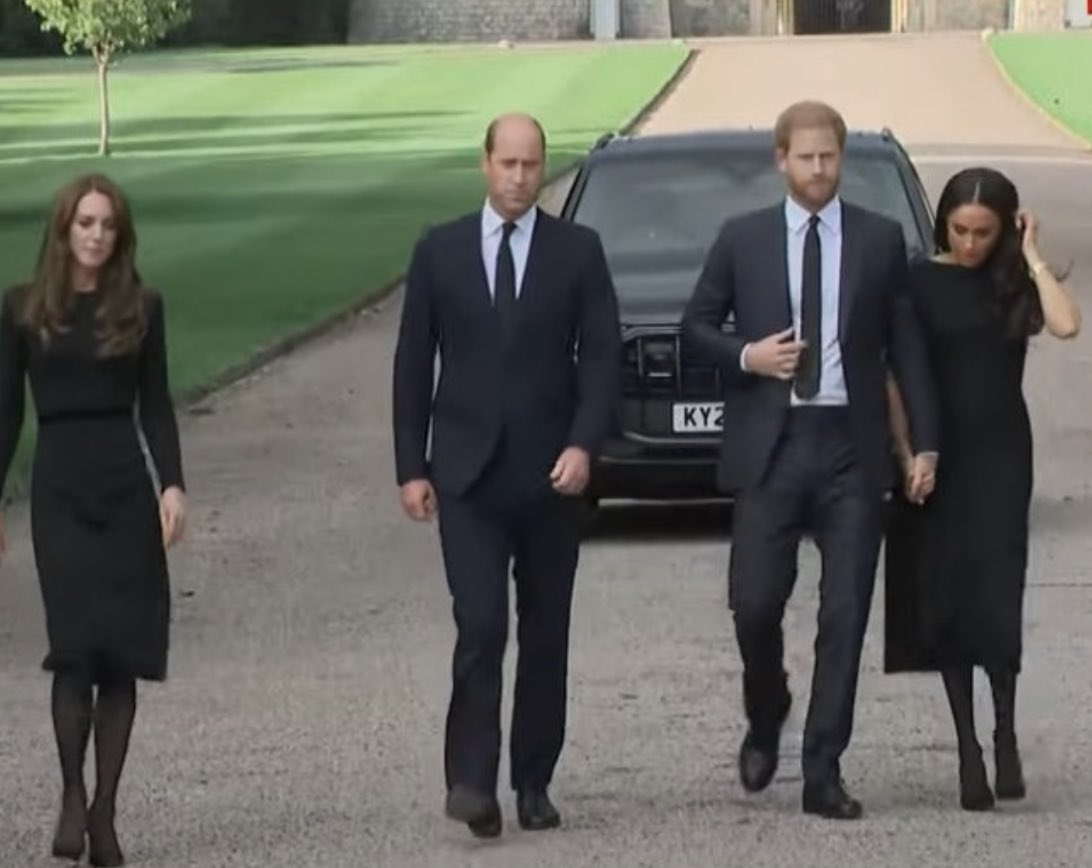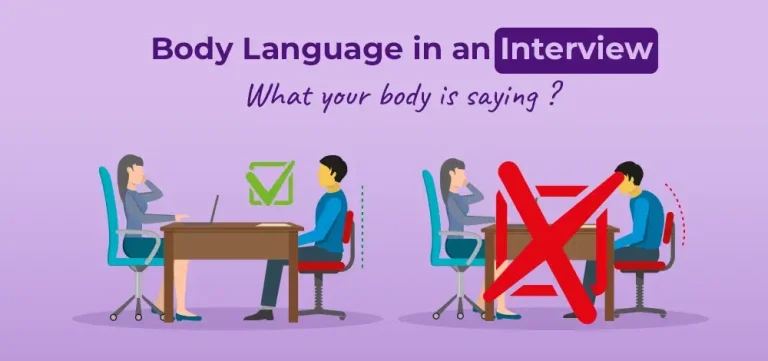How to Become a Body Language Expert?
To become a body language expert, focus on studying and practicing nonverbal communication techniques. In today’s world, where effective communication is key, understanding body language can give you an edge in various personal and professional situations.
By interpreting gestures, facial expressions, and posture, you can better understand others’ emotions and motivations. This guide will provide you with valuable insights and strategies on how to become a body language expert. It will cover essential steps such as observing and analyzing body language cues, learning from experts, and applying your knowledge in real-life interactions.
Ready to unlock the secrets of nonverbal communication? Let’s dive in!
Understanding The Basics Of Body Language
Body language is a powerful form of nonverbal communication that can greatly influence the way we interact with others. Master the art of reading gestures, facial expressions, and posture to decipher what others are truly saying. By understanding the basics of body language, you can become more attentive to the subtleties of human behavior and develop your skills as a body language expert.
Importance Of Body Language In Conveying Messages:
- Body language plays a crucial role in communication as it can convey messages more effectively than words alone.
- It helps to establish rapport and build trust between individuals.
- Body language provides insight into a person’s true emotions and feelings, often revealing hidden meanings behind their words.
- Understanding body language can help you interpret and respond to others in a more empathetic and sensitive manner, leading to better connections and relationships.
Key Components Of Body Language:
- Facial expressions: The face is a primary tool for conveying emotions such as happiness, surprise, anger, and sadness.
- Gestures: Hand movements, arm positions, and overall body movements can enhance or reinforce the spoken word.
- Posture: How we hold ourselves communicates our level of confidence, openness, and interest in a conversation.
- Eye contact: Maintaining appropriate eye contact is crucial for effective communication and displays attentiveness and engagement.
- Proxemics: The distance between individuals during an interaction can indicate power dynamics, comfort levels, and the nature of the relationship.
Common Body Language Cues And Their Meanings:
- Crossed arms: May suggest defensiveness, disagreement, or being closed off.
- Nodding: Indicates agreement or understanding, active listening.
- Leaning forward: Shows interest and engagement with the speaker or topic.
- Fidgeting or restlessness: Can reveal nervousness or discomfort.
- Touching the face or mouth: May indicate dishonesty or anxiety.
- Mirroring: Subconsciously mimicking someone’s body language reflects rapport and connection.
Understanding these key components and common body language cues will help you interpret people’s unspoken messages accurately. However, it’s important to note that body language cues can vary across cultural contexts, so always consider cultural differences when analyzing body language.
By becoming proficient in analyzing body language, you can better understand the messages people convey and respond appropriately. Continued observation and practice will enhance your ability to read others accurately, ultimately making you a body language expert. So, let’s dive in and start your journey towards mastering the art of body language!

Credit: www.independent.co.uk
Developing Observation Skills
Develop your observation skills and become a body language expert through these effective strategies. Enhance your ability to interpret nonverbal cues and understand hidden emotions for better communication.
Paying Attention To Non-Verbal Cues In Everyday Interactions
- Facial expressions: Pay attention to the various expressions people make with their faces, such as smiles, frowns, and raised eyebrows. These can provide insights into their emotions and intentions.
- Gestures: Observe the movements and gestures people make with their hands and body. These can convey important messages and indicate their level of engagement in a conversation.
- Posture: Notice how people sit or stand when interacting with others. A slouched posture may suggest disinterest or fatigue, while an upright and open posture can indicate attentiveness and confidence.
- Eye contact: Take note of how much eye contact individuals make during conversations. Sustained eye contact is often a sign of engagement, while avoiding eye contact may indicate discomfort or dishonesty.
- Tone of voice: Listen to the tone and pitch of someone’s voice. A pleasant and even tone can signify calmness and sincerity, whereas a high-pitched or aggressive tone may indicate agitation or defensiveness.
Practicing Active Listening And Observation
- Focus on the speaker: Give your full attention to the person you are interacting with. Avoid distractions and try to actively listen to both their verbal and non-verbal cues.
- Avoid interrupting: Allow the speaker to finish their thoughts before responding. Interrupting can disrupt the flow of conversation and may hinder your ability to pick up on important non-verbal cues.
- Use open-ended questions: Engage in conversation by asking open-ended questions that encourage the speaker to elaborate. This allows you to gather more information and observe their body language in response.
- Take notes: Jotting down key points can help you stay focused and retain important information. It also gives you the opportunity to review your observations later.
- Practice patience: Becoming a body language expert takes time and practice. Be patient with yourself as you develop your observation skills and learn to interpret non-verbal cues effectively.
Recognizing Cultural Differences In Body Language
- Educate yourself: Familiarize yourself with cultural norms and customs related to body language. Different cultures may have varying interpretations of gestures, postures, and eye contact.
- Consider context: Recognize that body language can be influenced by cultural backgrounds, individual traits, and specific situations. Take into account the specific context when interpreting non-verbal cues.
- Be respectful: Approach cultural differences in body language with an open and non-judgmental mindset. Avoid making assumptions or generalizations based on limited observations.
- Seek guidance: If you regularly interact with individuals from different cultures, consider seeking guidance from cultural experts or conducting research to deepen your understanding of cultural nuances in body language.
- Adapt and learn: Continually educate yourself on cultural differences in body language to refine your observation skills. Embrace the opportunity to learn from diverse perspectives and expand your cross-cultural communication abilities.
Studying Psychological And Sociological Aspects
To become a body language expert, studying psychological and sociological aspects is crucial. By understanding human behavior and societal influences, one can interpret nonverbal cues effectively and become adept at analyzing body language. Mastering these skills paves the way for a successful career in body language expertise.
Exploring The Connection Between Body Language And Emotions
Body language is a powerful means of nonverbal communication that can often reveal a person’s true emotions. Studying the psychological and sociological aspects of body language can help you become an expert in interpreting these subtle cues. Here are some key points to consider:
- Body language cues, such as facial expressions, gestures, and posture, are closely linked to a person’s emotions. By understanding the connection between body language and emotions, you can develop the ability to accurately read and interpret these signals.
- A raised eyebrow, for example, might indicate surprise or disbelief, while crossed arms could suggest defensiveness or resistance. By observing and analyzing these cues in context, you can gain insights into a person’s underlying emotions.
- Emotions expressed through body language can vary across different cultures and individuals. It’s important to factor in cultural differences and individual variations when interpreting body language cues.
Learning From Experts And Resources
Learn the art of body language analysis from experts and resources to become a body language expert. Acquire practical knowledge and skills through comprehensive training and study materials, helping you decode nonverbal cues and understand the hidden messages behind human gestures and movements.
Attending body language workshops and seminars:
- Participating in workshops and seminars is an effective way to gain practical knowledge and insights into body language.
- These events are usually conducted by renowned body language experts who share their expertise and experiences.
- Attending workshops and seminars allows you to interact with like-minded individuals and learn from their perspectives.
- By observing demonstrations and engaging in exercises, you can enhance your ability to interpret and interpret nonverbal cues effectively.
- Workshops and seminars provide an opportunity to ask questions and seek clarification from experts in the field.
Reading books and articles on body language:
- Reading books and articles written by body language experts is a valuable source of information.
- Books provide in-depth knowledge about the science of body language, the different types of nonverbal cues, and their interpretations.
- Articles, on the other hand, offer concise and specific insights into particular aspects of body language.
- By reading extensively, you can broaden your understanding of body language and stay up-to-date with the latest research and findings.
- Additionally, books and articles often include practical exercises and real-life examples that help you apply your learning effectively.
Following body language experts and researchers in the field:
- One of the easiest ways to learn from experts is by following them on social media platforms, such as Twitter or LinkedIn.
- Many renowned body language experts regularly share valuable insights, tips, and research findings on their social media accounts.
- By following them, you can stay updated with the latest trends, studies, and techniques related to body language.
- Pay attention to the content they share, as well as any recommended resources, such as books, podcasts, or videos.
- Engage with their posts by commenting and asking questions, which can help you develop a network of professionals in the field.
By attending workshops and seminars, reading books and articles, and following body language experts and researchers, you can immerse yourself in the world of body language and become an expert in interpreting nonverbal cues. Remember, consistent practice and application of your knowledge are key to developing expertise in this fascinating field.
Practicing And Applying Body Language Skills
Learn how to become a body language expert by practicing and applying your skills effectively. Develop a deep understanding of non-verbal cues to enhance your communication and create impactful connections with others.
Practicing Different Body Language Techniques
- Role-playing: Practice different scenarios with a partner or a group, taking turns to portray different body language signals and interpreting their meanings.
- Mirror technique: Observe and mimic the body language of individuals on TV shows, movies, or real-life situations to enhance your ability to replicate non-verbal cues accurately.
- Self-awareness exercises: Pay attention to your own body language in various situations and analyze the signals you are unknowingly sending.
- Practicing in front of a mirror: Observe how you present yourself and make adjustments to improve your body language.
- Recording yourself: Record video or audio of yourself in different situations to analyze and evaluate your body language skills.
Analyzing And Interpreting Body Language In Real-Life Situations
- Paying attention to facial expressions: Observe the subtle changes in facial expressions to gauge someone’s emotions or reactions.
- Decoding non-verbal cues: Analyze gestures, hand movements, eye contact, and posture to comprehend hidden meanings in conversations.
- Noting behavioral patterns: Observe individuals over time to identify consistent body language signals associated with their emotions, thoughts, or intentions.
- Contextual analysis: Consider the surroundings and the specific situation when interpreting body language cues to avoid misinterpretation.
- Cultural awareness: Recognize that body language cues may vary across different cultures and adapt your interpretation accordingly.
Using Body Language To Enhance Communication And Relationships
- Establishing rapport: Use appropriate body language signals, such as maintaining eye contact, nodding, and mirroring, to build trust and connection with others.
- Active listening: Display open body language, such as leaning forward and nodding, to show engagement and attentiveness while someone is speaking.
- Nonverbal empathy: Use your body language to convey empathy and understanding by mirroring the emotional state of the person you are interacting with.
- Power poses: Practice confident body postures, such as standing tall with shoulders back, to boost your confidence and improve your overall presence.
- Adapting to others: Adjust your body language to match the communication style and comfort level of the person you are interacting with to create a more harmonious interaction.
By regularly practicing different body language techniques, analyzing and interpreting non-verbal cues in real-life situations, and utilizing body language to enhance communication and relationships, you can become a body language expert. Remember, the key is to be observant, adaptable, and mindful of the context in which the body language signals are being displayed.
Specializing In A Specific Field
Body language is a fascinating aspect of nonverbal communication that can provide valuable insights into human behavior. If you’re interested in becoming a body language expert, one effective approach is to specialize in a specific field. By focusing your expertise, you can develop a deep understanding of how body language manifests in various contexts, allowing you to offer valuable insights and guidance.
Here are three possible areas where you can specialize in:
Exploring Body Language In Professional Settings
In professional settings such as business, sales, and negotiations, body language plays a crucial role in establishing credibility, building rapport, and conveying confidence. Understanding the subtle cues can help you unlock the keys to successful interactions. Some key aspects to explore include:
- Posture and stance: The way individuals hold themselves can reveal their confidence level and engagement in the conversation.
- Hand gestures: Different hand movements can convey various messages, such as openness, authority, or uncertainty.
- Eye contact: The duration and intensity of eye contact can indicate interest, honesty, or deception.
- Facial expressions: Nonverbal cues expressed through facial expressions can convey emotions, attitudes, or reactions.
Understanding Body Language In Personal Relationships
In personal relationships, body language can offer insights into the dynamics of dating, friendships, and family interactions. By specializing in this area, you can enhance your ability to read and interpret nonverbal signals to gain a better understanding of interpersonal dynamics.
Here are some aspects to explore in personal relationships:
- Proximity and touch: The level of physical closeness and touch between individuals reveals their comfort and intimacy.
- Tonal variation: Changes in voice tone can reflect emotions such as enthusiasm, anger, or sadness.
- Mirroring: When people unconsciously mimic each other’s body language, it can signify rapport and connection.
- Microexpressions: These fleeting facial expressions can convey concealed emotions, providing insights into hidden feelings.
Applying Body Language Expertise In Public Speaking Or Presentations
Public speaking and presentations require effective communication, and understanding body language can greatly enhance your impact on an audience. By specializing in this area, you can become skilled at both delivering messages with confidence and reading audience reactions. Here are some areas to focus on:
- Gestures and body movements: Purposeful and deliberate movements can emphasize key points and improve audience engagement.
- Vocal delivery: Tone, pace, and volume can influence the reception of your message, and understanding the impact of these factors is essential.
- Audience analysis: By observing the body language, facial expressions, and postures of individuals in the audience, you can gauge their level of interest and adjust your delivery accordingly.
- Nonverbal confidence indicators: By adopting confident body language yourself, such as good posture and open gestures, you can inspire confidence in your audience.
By specializing in a specific field, such as exploring body language in professional settings, understanding body language in personal relationships, or applying body language expertise in public speaking or presentations, you can develop a deep understanding of nonverbal communication within a targeted context.
This specialization will allow you to offer valuable insights and guidance to those who seek your expertise. So, choose your area of interest and start your journey towards becoming a body language expert!
Frequently Asked Questions On How To Become A Body Language Expert?
How Do You Become A Body Language Master?
To become a body language master, follow these steps: 1. Study body language cues and their meanings. 2. Practice observing and interpreting body language in real-life situations. 3. Seek professional training or courses on body language analysis. 4. Continuously refine your skills through practical application and self-reflection.
What Is A Body Language Expert Called?
A body language expert is called a nonverbal communication specialist or a kinesics expert.
What Profession Reads Body Language?
A profession that reads body language is called a body language expert.
Is There A Course To Study Body Language?
Yes, there are courses available to study body language.
Conclusion
Mastering body language can be a game-changer when it comes to communication. By understanding the subtle cues and signals that people give off, you can gain valuable insights into their thoughts and emotions. Becoming a body language expert requires dedication and practice, but the rewards are worth it.
Start by developing your observational skills and learning about the different nonverbal cues. Practice interpreting body language in real-life situations, such as conversations and presentations. Additionally, consider enrolling in courses or workshops to further enhance your knowledge. Remember that body language is not an exact science, and it’s important to consider contextual factors and individual differences.
With time and persistence, you can become a proficient body language expert and improve your communication skills in all areas of your life. So, start today and unlock the power of nonverbal communication!

